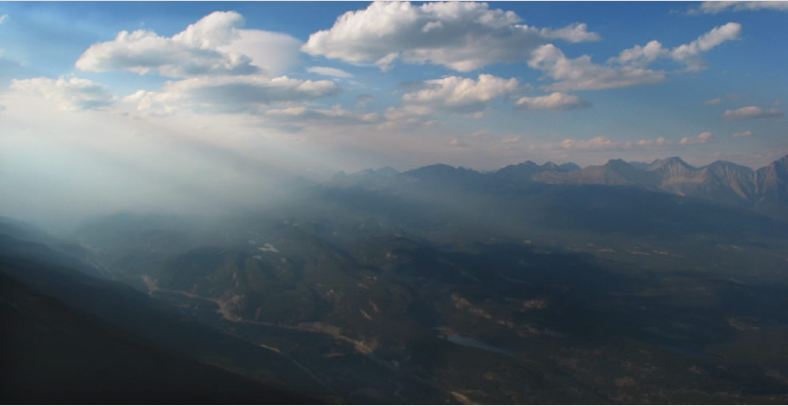Rays over the Tasman Sea, New Zealand
Rays over the Tasman Sea, New Zealand
When gazing out over the Tasman Sea in New Zealand, one might be fortunate enough to witness a captivating atmospheric phenomenon known as "rays." These rays, also referred to as crepuscular rays or sunbeams, create a mesmerizing display as they illuminate the sky and land below. While they may appear to be beams of light radiating from the sun, they are actually a result of the scattering and blocking of sunlight by various atmospheric elements. Let's delve deeper into the fascinating world of rays over the Tasman Sea.
What Causes Rays?
The primary cause of rays is the interaction between sunlight and particles in the Earth's atmosphere. As sunlight passes through the atmosphere, it encounters particles such as dust, water droplets, or smoke. These particles can scatter the sunlight in different directions, leading to the formation of rays. The most common type of scattering involved in ray formation is known as Rayleigh scattering, where shorter wavelengths of light, such as blue and violet, are scattered more strongly than longer wavelengths like red and orange.
The Role of Clouds in Ray Formation
Clouds play a significant role in the formation and appearance of rays. When sunlight interacts with clouds, it can be scattered or absorbed by the water droplets or ice crystals within them. This scattering can create distinct patterns of light and shadow, resulting in the appearance of rays. Depending on the density and thickness of the clouds, the rays may be more pronounced or diffused, adding to the dramatic effect.
The Influence of Atmospheric Conditions
Various atmospheric conditions can impact the visibility and intensity of rays over the Tasman Sea. Factors such as air pollution, humidity levels, and the presence of aerosols can affect how sunlight interacts with the atmosphere and contribute to ray formation. For instance, in areas with high levels of air pollution or wildfires, smoke particles can scatter sunlight and make the rays more visible. Similarly, in humid conditions, water droplets in the air can enhance the scattering of light, resulting in more prominent and well-defined rays.
The Angle of the Sun
The angle at which the sun is positioned in the sky also plays a crucial role in the appearance of rays. When the sun is low on the horizon, such as during sunrise or sunset, its rays have a longer path through the atmosphere. This extended path increases the likelihood of scattering and allows for more pronounced and elongated rays to form. As the sun rises higher in the sky, the angle decreases, resulting in shorter and less distinct rays.
Optical Illusions and Perspective
The perception of rays can vary depending on the observer's position and perspective. Due to the convergence of perspective, the rays may appear to originate from a single point on the horizon, commonly referred to as the "anti-solar point." However, this convergence is merely an optical illusion caused by the parallel nature of sunlight and our line of sight. In reality, the rays are parallel and do not physically intersect at a single point.
Cultural Significance
Throughout history, rays have held cultural and symbolic significance for various civilizations. They have been associated with divine or spiritual manifestations, often depicted in religious art and mythology. In many cultures, rays are seen as a symbol of enlightenment, hope, or divine intervention. The awe-inspiring beauty of rays over the Tasman Sea continues to captivate locals and visitors alike, evoking a sense of wonder and appreciation for the natural world.
Capturing Rays in Photography
The mesmerizing beauty of rays over the Tasman Sea has made them a popular subject for photographers. Capturing these ephemeral moments requires an understanding of lighting techniques and composition. By framing the rays against a contrasting backdrop or incorporating other elements such as clouds or silhouettes, photographers can enhance the visual impact of their images. Additionally, experimenting with different camera settings and angles can help capture the intricate details and atmospheric nuances of these captivating phenomena.
Conclusion
Rays over the Tasman Sea in New Zealand are a stunning example of the interplay between sunlight and the Earth's atmosphere. The scattering of light by atmospheric particles, the presence of clouds, and various atmospheric conditions all contribute to the formation and appearance of these captivating sunbeams. As we gaze upon these rays, we are reminded of the remarkable beauty and complexity of our atmosphere, inviting us to marvel at the wonders that surround us. So, the next time you find yourself by the Tasman Sea, keep your eyes peeled for the enchanting display of rays that may grace the sky above.

Smoke rays, Alberta, Canada. Peg Zenko (Tangent Photos) took this panorama from Whistler's Mountain in Jasper National Park. Smoke from a fire in British Columbia scatters the sunlight and makes the sunrays visible. The rays look bluish because small smoke particles are Rayleigh scatterers - they scatter blue much more strongly than longer wavelength red light. ©Peg Zenko, shown with permission.
Note: this article has been automatically converted from the old site and may not appear as intended. You can find the original article here.
Reference Atmospheric Optics
If you use any of the definitions, information, or data presented on Atmospheric Optics, please copy the link or reference below to properly credit us as the reference source. Thank you!
-
<a href="https://atoptics.co.uk/blog/rays-over-the-tasman-sea-new-zealand/">Rays over the Tasman Sea, New Zealand</a>
-
"Rays over the Tasman Sea, New Zealand". Atmospheric Optics. Accessed on November 26, 2024. https://atoptics.co.uk/blog/rays-over-the-tasman-sea-new-zealand/.
-
"Rays over the Tasman Sea, New Zealand". Atmospheric Optics, https://atoptics.co.uk/blog/rays-over-the-tasman-sea-new-zealand/. Accessed 26 November, 2024
-
Rays over the Tasman Sea, New Zealand. Atmospheric Optics. Retrieved from https://atoptics.co.uk/blog/rays-over-the-tasman-sea-new-zealand/.